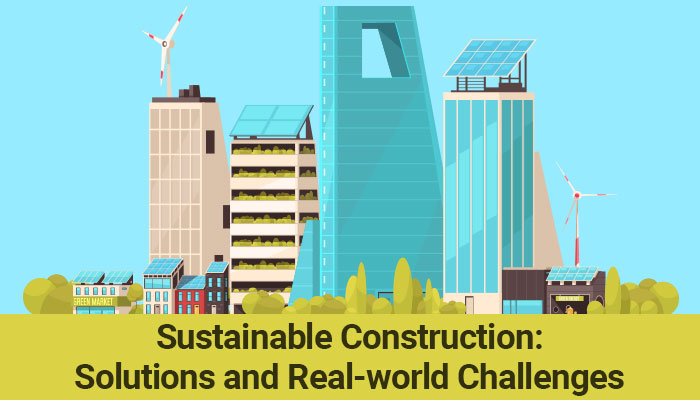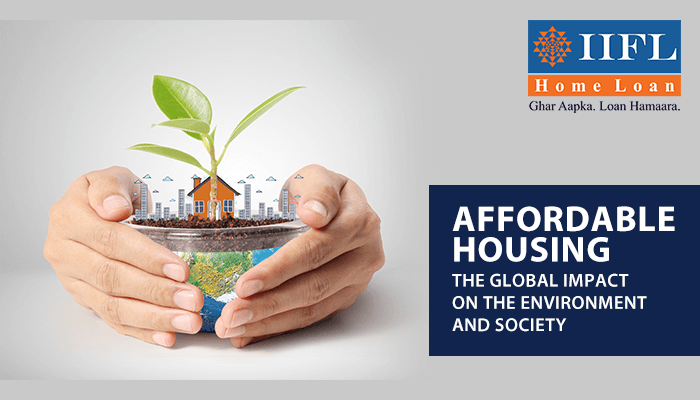The Remarkable Benefits of Recycled Materials in Sustainable Construction

The construction industry is crucial for the growth and development of any economy, but it also has a negative impact. We need sustainable practices now more than ever to address resource depletion, pollution, and waste generation caused by the construction industry.
Fortunately, the emergence of recycled building materials has opened up a world of possibilities for sustainable construction. In this article, we will explore how recycled materials are transforming the construction industry and paving the way for a greener, more sustainable future with eco-friendly houses.

The Rise of Recycled Materials
There has been a remarkable increase in the use of recycled materials in construction. From reclaimed wood and recycled steel to crushed concrete and recycled plastic, these eco-friendly building materials are being employed to minimise the reliance on virgin resources.
These green building materials are often sourced from post-consumer waste or industrial byproducts. Additionally, industrial byproducts, such as steel slag and concrete rubble, can be repurposed to create construction components with a reduced environmental footprint.
Shifting away from the "take-make-dispose" model
The integration of recycled materials into the construction industry also plays a crucial role in promoting a circular economy. By closing the loop and giving waste a new purpose, you as a consumer can shift away from the "take-make-dispose" model.
Instead, you can create a system where these eco-friendly construction materials are continuously reused, fostering a sustainable and self-sufficient ecosystem. This transition reduces waste generation and stimulates innovation, collaboration, and the development of circular supply chains. Thus, providing sustainable solutions for a better future.

-
Environmental Benefits
When it comes to the environmental benefits of using recycled materials in construction, the impact cannot be overstated. The benefits are discussed in detail as follows:
-
Reduction in waste going to landfills
Incorporating recycled materials means diverting a staggering amount of waste from winding up in landfills. Landfills are one of the major sources of greenhouse gas emissions. You can prevent recycled materials from decomposing and releasing harmful gases like methane.
-
Energy Savings
Producing building materials from scratch requires substantial amounts of energy, involving mining, refining, transportation, and manufacturing processes. However, recycling materials require considerably less energy, as they have already undergone processing. By opting for recycled materials, you reduce the demand for energy-intensive manufacturing and your actions lessen the dependence on fossil fuels.
-
Water Conservation
The production of traditional building materials involves substantial water consumption, from irrigation for growing timber to water-intensive processes like ore refining. By embracing recycled materials, you can reduce the water footprint associated with construction activities. This is especially crucial in areas where water scarcity is a pressing issue.
-
Improved Resource Efficiency
The incorporation of recycled materials in construction signifies a significant step towards resource efficiency. By reducing your reliance on virgin resources, conserving natural ecosystems, and encouraging innovation, you can create a pathway towards a more sustainable and responsible construction industry with green building materials.

Final Thoughts
The construction industry holds immense potential to shape a sustainable future, and the use of recycled materials is a significant step in that direction. By embracing innovative solutions and reducing your reliance on virgin resources, you can minimise waste, lower carbon emissions, and preserve natural ecosystems.
The shift towards a circular economy mindset not only benefits the environment but also stimulates creativity, collaboration, and cost savings within the construction industry. With the rise of recycled materials, you have the opportunity to create a greener, more sustainable built environment that meets your needs without compromising the well-being of our planet. These sustainable solutions ensure that the needs of future generations are not being sacrificed for today's fulfilment.
Read about the Green Value Partner initiative by IIFL Home Loans which is actively contributing to building a sustainable future.
Frequently Asked Questions (FAQs)
Q1. How are recycled materials used in construction?
Recycled materials are used in various construction applications, such as structural components, building facades, insulation, flooring, and landscaping.
Q2. Are recycled materials as durable as virgin materials?
Yes, recycled materials can exhibit comparable or even superior performance to their virgin counterparts. For example, recycled plastic lumber can be just as durable as traditional timber.
Q3. How do recycled materials contribute to waste reduction?
By repurposing materials that would otherwise end up in landfills, recycled materials significantly reduce waste generation.
Q4. What are the environmental benefits of using recycled materials in construction?
Using recycled materials in construction helps reduce carbon emissions, conserve natural resources, save energy, and minimise water consumption.
Q5. How does the incorporation of recycled materials support a circular economy?
The use of recycled materials aligns with the principles of a circular economy, where resources are continuously reused.
Tags
Disclaimer: The information contained in this post is for general information purposes only. IIFL Home Finance Limited (including its associates and affiliates) ("the Company") assumes no liability or responsibility for any errors or omissions in the contents of this post and under no circumstances shall the Company be liable for any damage, loss, injury or disappointment, etc. suffered by any reader. All information in this post is provided "as is", with no guarantee of completeness, accuracy, timeliness, or of the results, etc. obtained from the use of this information, and without warranty of any kind, express or implied, including, but not limited to warranties of performance, merchantability, and fitness for a particular purpose. Given the changing nature of laws, rules, and regulations, there may be delays, omissions, or inaccuracies in the information contained in this post. The information on this post is provided with the understanding that the Company is not herein engaged in rendering legal, accounting, tax, or other professional advice and services. As such, it should not be used as a substitute for consultation with professional accounting, tax, legal or other competent advisers. This post may contain views and opinions which are those of the authors and do not necessarily reflect the official policy or position of any other agency or organization. This post may also contain links to external websites that are not provided or maintained by or in any way affiliated with the Company and the Company does not guarantee the accuracy, relevance, timeliness, or completeness of any information on these external websites. Any/ all (Home/ Loan Against Property/ Secured Business Loan/ Balance Transfer/ Home Improvement Loan/ NRI Home Loan/ Home Loan for Uniformed Services) loan product specifications and information that may be stated in this post are subject to change from time to time, readers are advised to reach out to the Company for current specifications of the said (Home/ Loan Against Property/ Secured Business Loan/ Balance Transfer/ Home Improvement Loan/ NRI Home Loan/ Home Loan for Uniformed Services) loan.
 Login
Login






















